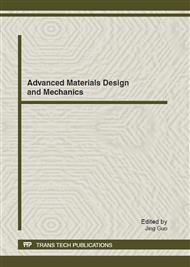p.400
p.405
p.410
p.415
p.420
p.428
p.433
p.437
p.442
Stability Analysis of Biped Walking
Abstract:
Tipping-over and slipping, which are related to zero moment point (ZMP) and frictional constraint respectively, are the most two common instability forms of biped robotic walking. Conventional criterion of stability is not sufficient in some cases, since it neglects frictional constraint or considers only translational friction. The goal of this article is to fully address frictional constraints in biped walking and develop corresponding stability criteria. Frictional constraints for biped locomotion are first analyzed and the method to obtain the closed-form solutions of the frictional force and moment for a biped robot with rectangular or circular feet is then presented. The maximum frictional force and moment are calculated in the case of ZMP at the center of contact area. Experiments are conducted to verify the effectiveness of our stability analysis.
Info:
Periodical:
Pages:
420-427
Citation:
Online since:
September 2012
Authors:
Keywords:
Price:
Сopyright:
© 2012 Trans Tech Publications Ltd. All Rights Reserved
Share:
Citation:


